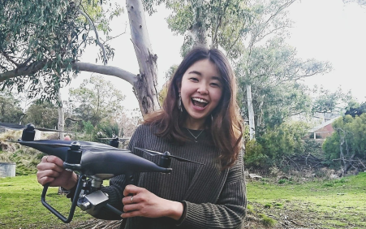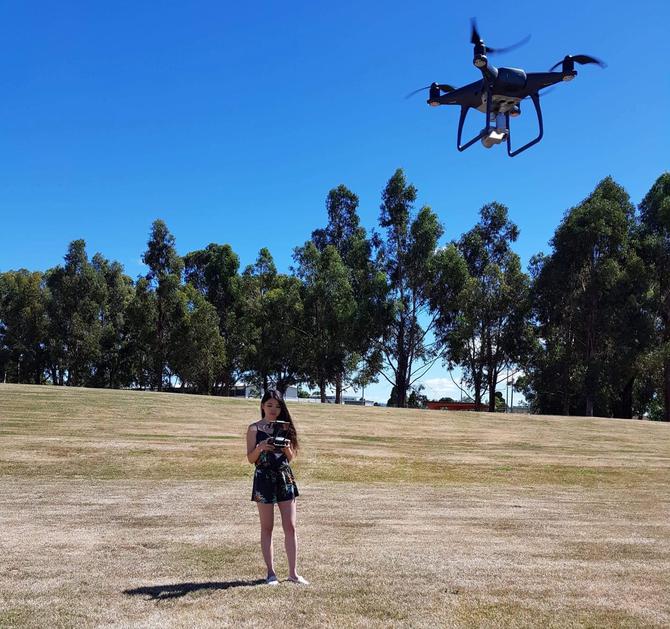Drones are being increasingly embraced as a powerful, cost-effective tool in wildlife management. Yee Von Teo will spend the next three years monitoring large mammals in Tasmania using drones for her doctoral research. Her PhD project is supervised by Prof Barry Brook and Dr Jessie Buettel of Biological Sciences and Dr Darren Turner from Geography and Spatial Sciences.
Yee Von explains, “Wildlife monitoring is a crucial component of conservation, with reliable field surveys being important for predicting future trends and viability of populations. Methods for surveying vertebrates typically involve counting and estimating population abundance. Changes in abundance can reflect the processes and outcomes of ecological interactions such as competition, predation and disease transmission, all of which are fundamental to the conservation, research and management of wildlife populations. Animal abundance can be measured either by directly counting individuals or via signs of presence, such as scats, tracks, and nests.”

Biological Sciences PhD candidate Yee Von Teo is passionate about wildlife conservation and ecology.
Traditionally, aerial surveys have often been done using ultralight aircraft and helicopters. However, traditional aerial surveys can result in visibility bias due to limited availability. Considering the nocturnal habits of many animals of conservation interest, flying aircraft at night for monitoring purposes can be problematic. Drones are an exciting alternative, and they are increasingly being embraced as a powerful, cost-effective tool in wildlife management.
Iconic, endemic species such as the Tasmanian native hen (Tribonyx mortierii), Tasmanian devil (Sarcophilus harrisii) and macropods, e.g., Tasmanian pademelon (Thylogale billardierii) would benefit from improved monitoring. I’m very interested in comparing-and-contrasting the methods I will develop with existing protocols from the Australian mainland,

Yee Von has logged many hours practicing her drone piloting skills, so that the drone surveys can be carried out with maximum precision in the field.
Specifically, she hopes to develop species-specific protocols for drone monitoring of Tasmanian animals, as well as and site-specific protocols tailored to certain habitats, e.g., agricultural areas, native grassland, open forest, and closed forest. She considers it especially important to figure out the optimum flight altitude to get the best images whilst causing minimal animal disturbance. Her techniques will include use of thermal imaging cameras for those species that are most active at night, deep-learning tools that will identify and count species observed by the drones on the spot, and complementing drone monitoring with traditional spotlight surveys.
Find out more about studying Science and Surveying and Spatial Sciences.
Find out more about our research degrees.
Contact Yee Von at yeevon.teo@utas.edu.au if you have any questions about her research.